Going Green: Eco-Crafts for Kids to Try
In today's world, where environmental issues are becoming increasingly pressing, it's essential to engage the younger generation in sustainable practices. One of the most enjoyable ways to do this is through eco-crafts. These creative projects not only allow kids to express their artistic talents but also teach them valuable lessons about recycling, sustainability, and the importance of caring for our planet. Imagine a world where children transform everyday trash into treasures, all while having a blast! Eco-crafting is like giving them a magic wand to turn the mundane into the extraordinary, and the best part? They get to learn while they play!
Eco-crafts are projects that utilize natural and recycled materials, encouraging children to think creatively and resourcefully. By engaging in these activities, kids can grasp the concept of sustainability in a fun and hands-on way. For instance, instead of tossing out that old cereal box, why not turn it into a colorful birdhouse? This approach not only reduces waste but also sparks a conversation about the importance of recycling. The beauty of eco-crafting lies in its ability to make learning about the environment an exciting adventure.
Engaging in eco-crafting offers a plethora of benefits for children. Not only does it enhance their fine motor skills as they cut, glue, and assemble their projects, but it also fosters teamwork and collaboration when done in groups. Imagine a group of kids working together to create a massive mural from recycled materials, each contributing their unique ideas and skills. This collaborative effort instills a sense of responsibility towards the environment, teaching them that their actions can make a difference.
Eco-crafts serve as a fantastic outlet for children's imaginations. When kids are given the freedom to create with recycled materials, they often surprise us with their innovative ideas. It's like giving them a blank canvas and a box of crayons—only in this case, the crayons are made from things like plastic bottles and cardboard! They learn to repurpose items, think outside the box, and express themselves artistically. What could be more fulfilling than watching a child transform an old shoe into a whimsical planter?
One of the most rewarding aspects of eco-crafting is the use of recycled materials. Not only does this save money, but it also teaches children the value of reusing items that would otherwise end up in a landfill. Instead of buying new supplies, look around your home for materials that can be repurposed. From toilet paper rolls to egg cartons, the possibilities are endless! This practice encourages kids to see potential where others see waste, making them more conscious consumers in the future.
Incorporating natural elements into eco-crafts connects children with the environment in a meaningful way. Imagine a child collecting leaves, stones, and twigs during a nature walk, only to return home and create a stunning collage or a unique sculpture. This not only fosters an appreciation for nature but also encourages exploration and curiosity about the world around them. It’s like bringing a piece of the outdoors inside, allowing them to cherish and understand the beauty of nature.
Eco-crafting is more than just a fun activity; it's an educational tool that makes complex environmental issues relatable and understandable for kids. Through hands-on experiences, they can learn about topics like pollution, conservation, and biodiversity in a playful manner. For instance, while making a bird feeder, they can discuss the importance of providing food for local wildlife and the impact of habitat loss. This playful approach transforms learning into an adventure, making it memorable and impactful.
Now that we've established the importance of eco-crafting, let's dive into some simple ideas that kids can try at home or in school. These projects use materials that are often found around the house or in nature, making them easily accessible. Here are a couple of ideas to get started:
Creating bird feeders from recycled materials is a fantastic way for children to learn about wildlife. Using items like plastic bottles or old teacups, kids can craft feeders that attract local birds to their yards. This project not only provides a fun crafting experience but also encourages children to observe and appreciate the beauty of nature right outside their windows.
Nature collages are another excellent eco-craft idea. Children can collect natural items like leaves, flowers, and small twigs during a nature walk and then use them to create beautiful collages. This activity fosters creativity while teaching them about biodiversity and the importance of preserving natural resources. Plus, it’s a great way to get them outdoors and engaged with their environment!
Ready to dive into the world of eco-crafting? Here are some tips for parents and educators to initiate these activities:
- Gather materials: Start by collecting recyclable items and natural materials.
- Set a creative space: Designate a crafting area where kids can freely explore their creativity.
- Encourage exploration: Let kids lead their projects, offering guidance but allowing their imaginations to run wild.
- Celebrate their creations: Display their finished projects to boost their confidence and encourage continued crafting!
Q: What age group is suitable for eco-crafting?
A: Eco-crafting can be adapted for various age groups. Young children can engage in simpler projects, while older kids can tackle more complex crafts.
Q: What materials can we use for eco-crafts?
A: You can use a wide range of materials including cardboard, paper, plastic bottles, fabric scraps, and natural items like leaves and stones.
Q: How can eco-crafting teach kids about sustainability?
A: By using recycled materials and natural elements, children learn the importance of reusing and conserving resources, fostering a sense of responsibility towards the environment.
Q: Can eco-crafting be done indoors?
A: Absolutely! Many eco-crafts can be done indoors, especially using recycled materials. Just ensure to have a designated crafting area to keep things organized!
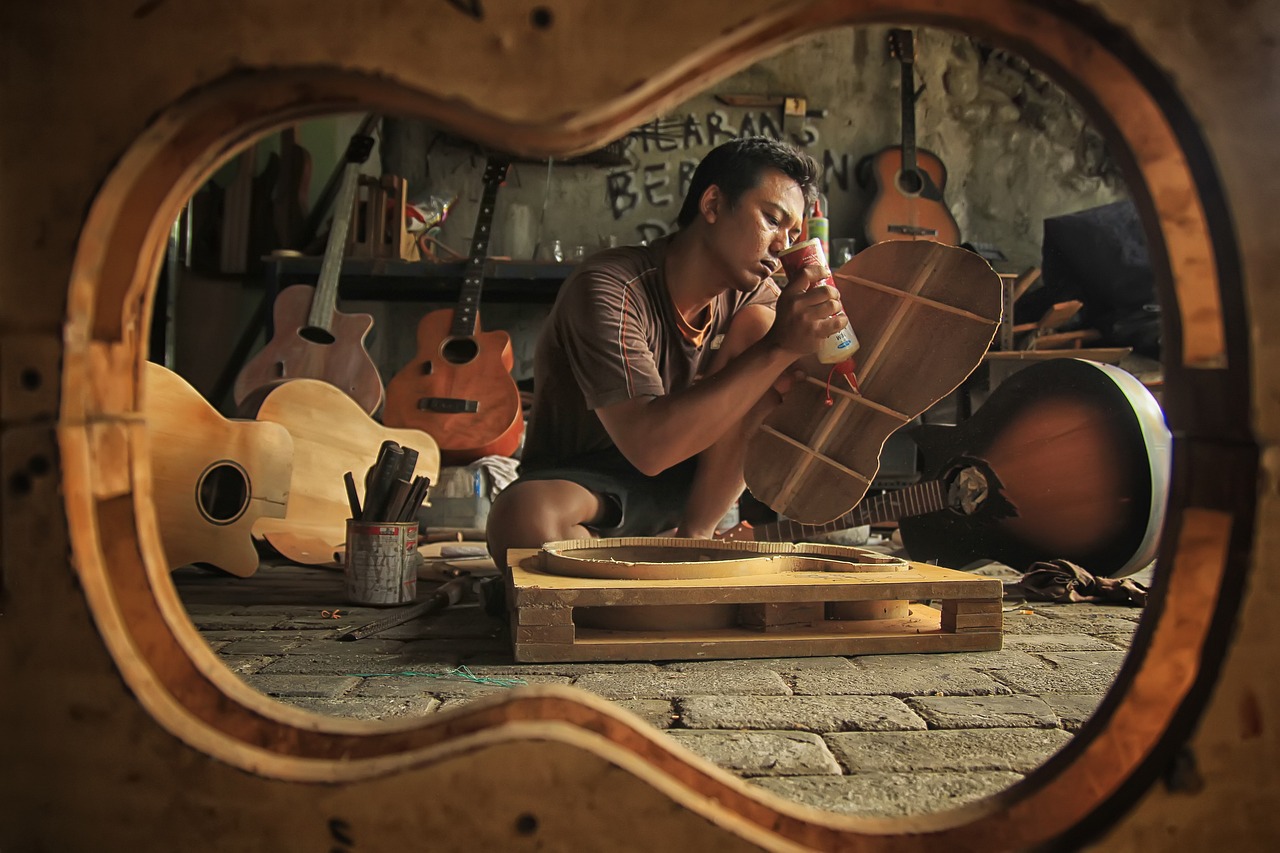
Understanding Eco-Crafts
Eco-crafts are more than just a fun way for kids to get their hands dirty; they are a gateway to understanding the vital concepts of sustainability and environmental stewardship. By engaging in eco-crafting, children learn to appreciate the world around them while developing their creativity. Imagine crafting a vibrant collage from fallen leaves or building a bird feeder from an old milk carton. These activities not only spark joy but also instill a sense of responsibility towards our planet.
At the heart of eco-crafts lies the philosophy of reuse and recycle. Teaching children about these principles can be as simple as showing them how to transform everyday items into something new and beautiful. For instance, you can take a look around your home and find materials that are often discarded:
- Empty toilet paper rolls
- Old newspapers
- Glass jars
- Fabric scraps
These items can be turned into a multitude of creative projects, from homemade instruments to decorative art pieces. The beauty of eco-crafting is that it encourages kids to think critically about waste and how they can make a difference through their actions.
Furthermore, eco-crafts serve as a powerful educational tool. They provide a hands-on approach to learning about environmental issues such as pollution, deforestation, and climate change. By participating in these activities, children can grasp complex topics in a relatable way. For instance, while making a compost bin from a plastic container, they can learn about composting and its benefits for the environment.
Incorporating eco-crafts into children's daily activities not only nurtures their artistic skills but also fosters a deeper connection with nature. When children collect materials from their environment, they become more aware of their surroundings and the importance of preserving them. The act of crafting with natural elements—like twigs, stones, and leaves—can transform a simple project into an exploration of biodiversity. This connection to nature is crucial in cultivating future generations that care about our planet.
In summary, eco-crafts are a fantastic way to blend creativity with environmental education. They empower children to express themselves while simultaneously teaching them valuable lessons about sustainability. By understanding the importance of eco-crafting, we can inspire a new wave of environmentally conscious individuals who will carry these principles into adulthood.
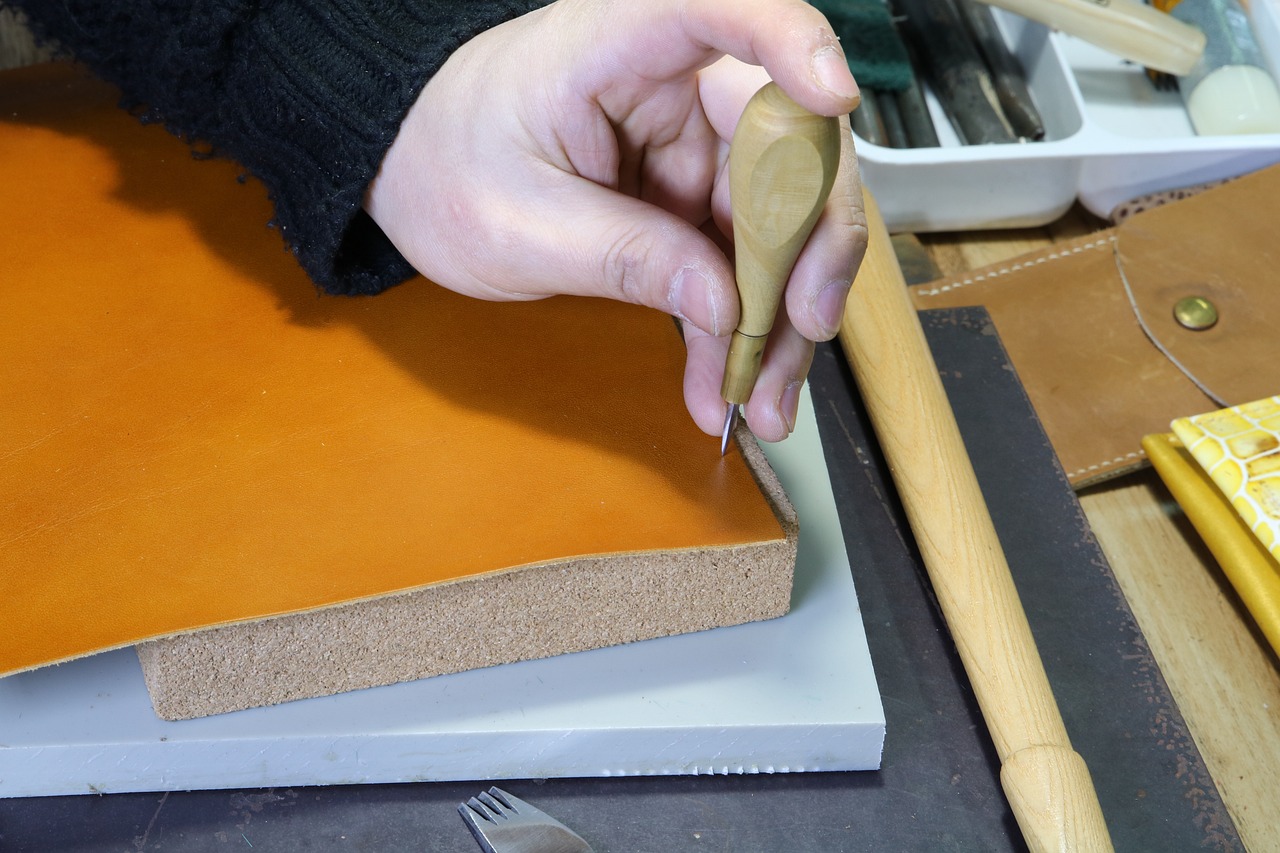
Benefits of Eco-Crafting for Kids
Engaging in eco-crafting offers a multitude of benefits for children, making it an enriching experience that goes beyond just fun and creativity. One of the most significant advantages is the enhancement of fine motor skills. As kids manipulate various materials, cut shapes, and glue items together, they are not only creating art but also improving their hand-eye coordination and dexterity. This skill development is crucial as it lays the foundation for more complex tasks they will encounter in life, such as writing or using tools.
Moreover, eco-crafting fosters a sense of teamwork and collaboration. When children work together on projects, they learn to communicate, share ideas, and respect each other's contributions. This collaborative spirit can lead to lasting friendships and a sense of community. Imagine a group of kids huddled around a table, brainstorming how to create the best bird feeder or nature collage. The laughter, the discussions, and the shared excitement are all part of the learning process that builds social skills.
Another vital aspect of eco-crafting is that it instills a sense of responsibility towards the environment. In a world increasingly aware of environmental issues, teaching children how to reuse and recycle materials is a powerful lesson. When they see firsthand how a plastic bottle can transform into a beautiful planter or a cardboard box can become a creative sculpture, they begin to understand the impact of their actions on the planet. This awareness can inspire them to adopt more sustainable practices in their daily lives, making them more conscientious individuals.
Furthermore, eco-crafting promotes creativity in a way that traditional crafting might not. Kids are encouraged to think outside the box, using recycled materials and natural elements to create something entirely unique. This process of repurposing items not only sparks their imagination but also teaches them that art can come from anywhere. For instance, a simple twig can become a frame for a picture, or an old magazine can be turned into colorful paper beads. The possibilities are endless, and the only limit is their imagination!
Lastly, eco-crafting provides a platform for learning through play. It’s an interactive way for children to grasp complex environmental issues. For example, while making a bird feeder, they learn about local wildlife and the importance of biodiversity. As they collect leaves for a collage, they discover various plant species and their roles in the ecosystem. This hands-on experience makes learning enjoyable and relatable, turning abstract concepts into tangible knowledge.
In conclusion, the benefits of eco-crafting extend far beyond mere entertainment. It’s a holistic approach to learning that combines creativity, skill development, environmental awareness, and social interaction. By encouraging children to engage in eco-friendly crafting, we are not only nurturing their artistic abilities but also shaping them into responsible and innovative thinkers of tomorrow.
- What materials can I use for eco-crafting? You can use a variety of recycled items such as cardboard, plastic bottles, old newspapers, and natural elements like leaves and stones.
- Are eco-crafts suitable for all age groups? Yes! Eco-crafts can be adapted for different age levels, making them suitable for toddlers to teenagers.
- How can I encourage my child to participate in eco-crafting? Make it fun! Set up a crafting space, provide a range of materials, and join in the fun to inspire them.
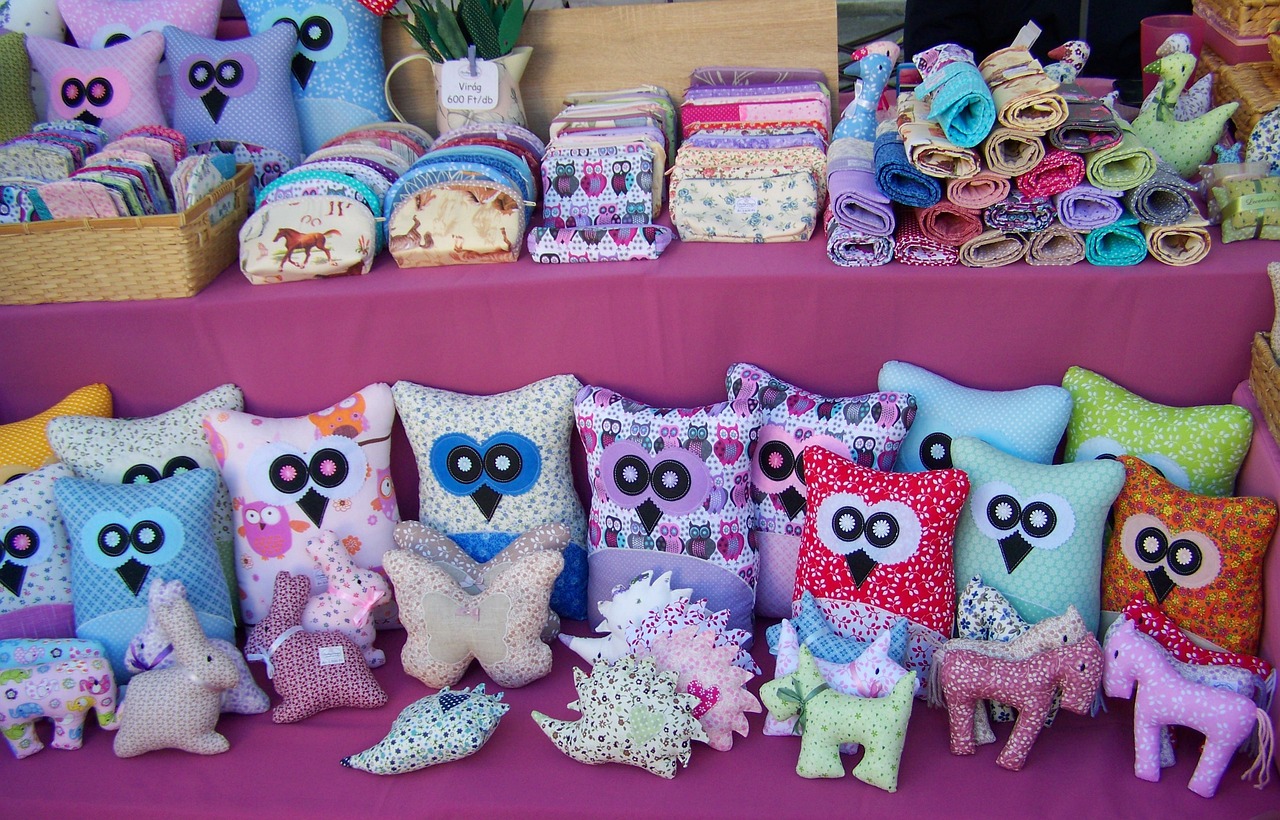
Promoting Creativity
When it comes to nurturing the creative spirit in children, eco-crafts are like a treasure chest waiting to be explored. Imagine a world where every child can transform everyday items into something truly unique and special. Eco-crafting not only allows kids to express their artistic flair but also encourages them to think outside the box—literally! By repurposing materials that would otherwise end up in a landfill, children learn to see potential where others see waste.
Engaging in eco-crafts can be a magical experience. Picture this: a simple cardboard box can become a spaceship, a castle, or even a robot. The only limit is their imagination! This kind of hands-on activity is fantastic for developing problem-solving skills as children figure out how to manipulate materials to create their desired outcomes. It’s like giving them a canvas and saying, “Go ahead, paint your dreams!”
Furthermore, eco-crafts foster an appreciation for the environment. When kids use materials from nature—like leaves, twigs, or stones—they form a connection with the earth. This connection is crucial, as it encourages them to think about sustainability and the impact of their actions on the planet. For instance, when they create a beautiful collage from fallen leaves, they not only create art but also learn about the importance of biodiversity and the role each element plays in our ecosystem.
To truly harness the power of eco-crafting in promoting creativity, consider these engaging activities:
- Storytelling through Art: Encourage children to create a piece of art that tells a story. This could be a diorama made from recycled boxes or a mural using natural pigments. By integrating storytelling, they can express their thoughts and feelings, enriching their creative experience.
- Group Projects: Organize group eco-crafting sessions where children work together to create larger projects. This not only stimulates creativity but also teaches them the value of teamwork and collaboration.
- Theme-Based Crafts: Introduce themes such as “Animals of the Forest” or “Under the Sea” for crafting sessions. This can guide their creativity while also educating them about different ecosystems.
In essence, eco-crafts are a powerful tool for promoting creativity in children. They provide a platform for artistic expression while instilling a sense of responsibility towards the environment. By encouraging kids to repurpose materials and explore nature, we nurture not just their creativity but also their understanding of the world around them. So, let’s grab those scissors, glue, and recycled materials, and watch as our children’s imaginations soar!
Q: What are eco-crafts?
A: Eco-crafts are creative projects that use recycled or natural materials, promoting sustainability and environmental awareness while allowing children to express their creativity.
Q: How can eco-crafts benefit my child's development?
A: Eco-crafts enhance fine motor skills, encourage teamwork, and instill a sense of responsibility towards the environment, all while fostering creativity and problem-solving abilities.
Q: What materials can we use for eco-crafting?
A: You can use a variety of materials such as cardboard, plastic bottles, old newspapers, leaves, rocks, and twigs. The key is to think creatively about what can be repurposed!
Q: Can eco-crafting be done indoors?
A: Absolutely! Many eco-crafts can be done indoors using recycled materials found around the house. Just ensure you have a clean workspace and some basic crafting supplies.
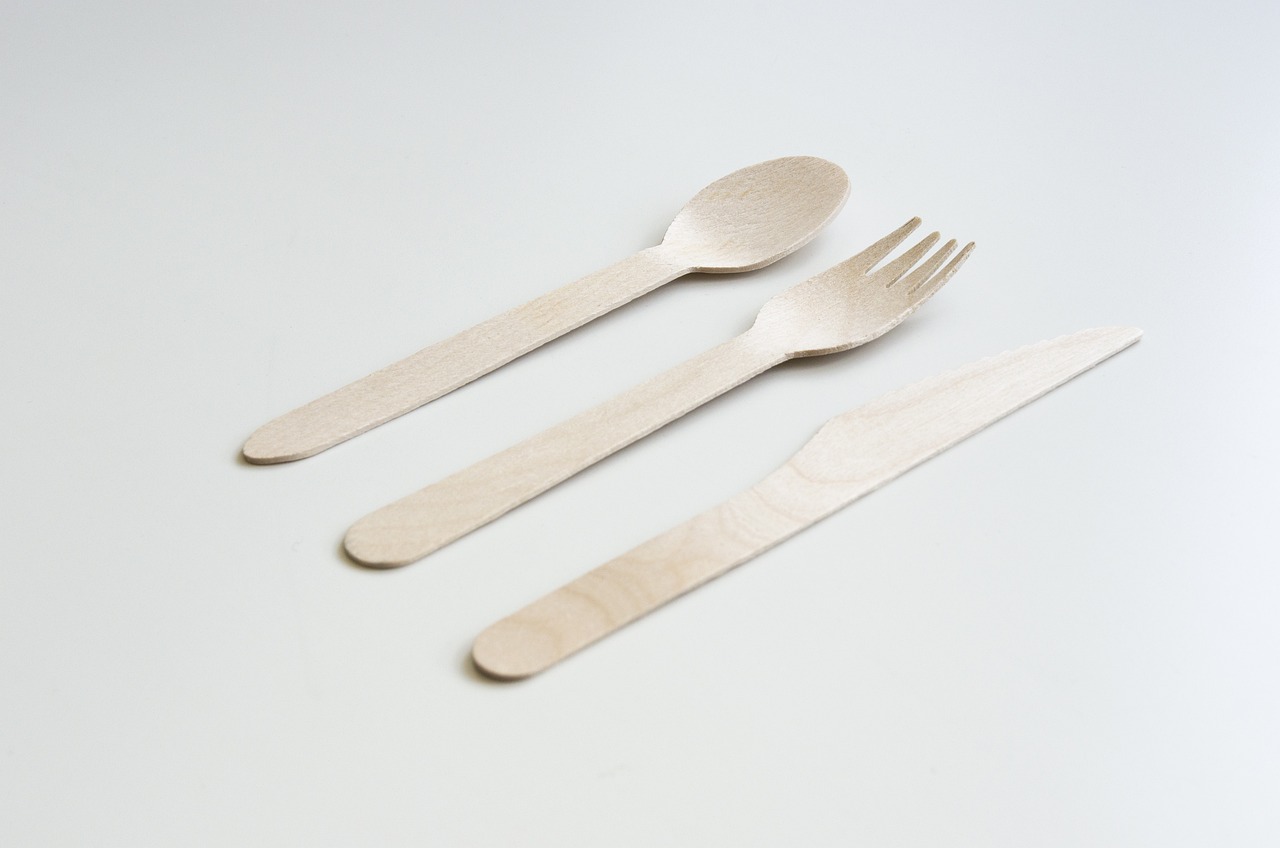
Using Recycled Materials
Engaging in eco-crafts using recycled materials is not just a fun activity; it’s a powerful lesson in sustainability that kids can embrace. Imagine turning a simple cardboard box into a vibrant castle or using old newspapers to create unique paper mache sculptures. These activities not only spark creativity but also teach children the importance of reusing items that might otherwise end up in landfills. By incorporating recycled materials into their crafting projects, kids learn to view everyday objects through a new lens, recognizing their potential for creativity and innovation.
One of the best parts about using recycled materials is that they are often readily available at home. Parents can encourage their children to gather items like:
- Empty plastic bottles
- Cardboard boxes
- Old magazines and newspapers
- Egg cartons
- Fabric scraps
This scavenger hunt for materials not only makes the crafting process exciting but also instills a sense of responsibility in children. They begin to understand that every item has value and can serve a purpose beyond its original use. For instance, an empty toilet paper roll can transform into a telescope, while a plastic bottle can become a colorful flower vase. The possibilities are endless!
Moreover, using recycled materials in crafts can lead to discussions about environmental impact. Parents and educators can take this opportunity to explain how recycling reduces waste, conserves resources, and minimizes pollution. By making these connections, children can grasp the significance of their actions in a broader context. They learn that every small effort counts in protecting our planet.
To take this a step further, consider creating a recycled materials challenge where children are tasked with crafting something entirely from items they find at home. This not only promotes creativity but also encourages critical thinking as they figure out how to repurpose materials effectively. The challenge can culminate in a mini-exhibition where kids showcase their creations, fostering a sense of accomplishment and community.
In summary, using recycled materials in eco-crafts is a fantastic way for children to engage with sustainability while expressing their creativity. It teaches them to appreciate the value of what they already have, turning the ordinary into the extraordinary. So next time you’re about to toss something out, think twice! It might just be the perfect ingredient for your child’s next masterpiece.
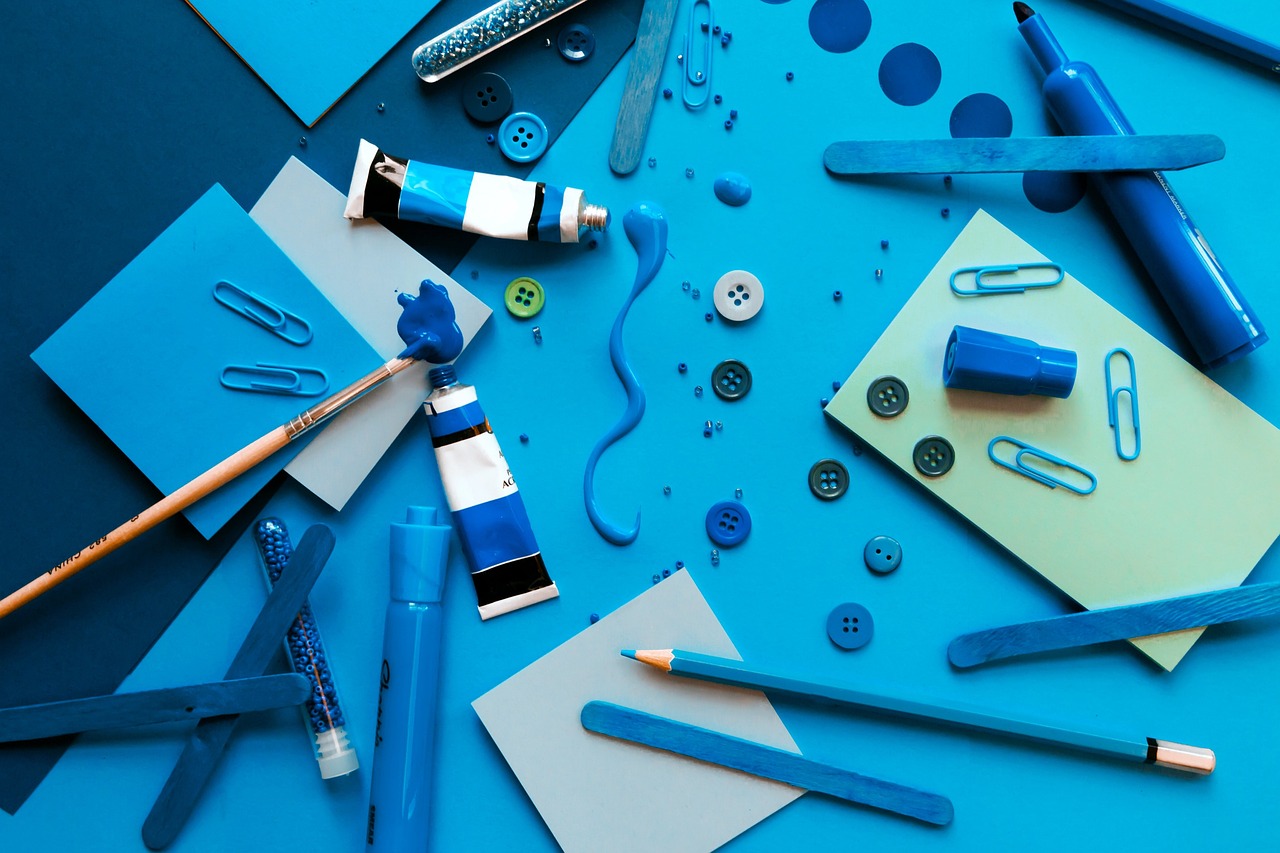
Incorporating Natural Elements
Incorporating natural elements into eco-crafts is a fantastic way to connect children with the beauty of the world around them. Think about it: when kids gather leaves, stones, twigs, or even flowers, they’re not just collecting materials; they’re embarking on a mini-adventure in nature! This hands-on approach not only sparks creativity but also instills a sense of wonder and appreciation for the environment. Imagine your child’s eyes lighting up as they discover the different textures, colors, and shapes of natural items. It’s like a treasure hunt, but instead of gold, they find the gems of nature!
Using these elements in crafting can lead to imaginative projects. For example, a simple walk in the park can turn into a crafting session where kids create nature crowns or leaf prints. They can gather fallen leaves, flowers, and even small branches, and then use them to make beautiful art pieces. This not only promotes creativity but also teaches them about the importance of biodiversity. As they craft, you can engage them in conversations about the different plants and animals that inhabit their surroundings, enhancing their understanding of ecosystems.
Additionally, incorporating natural elements can be a great way to discuss sustainability. You can explain how using materials from nature is a way to reduce waste and promote a healthier planet. For instance, if they create a collage using leaves, you can talk about how these leaves will eventually decompose and return nutrients to the soil, supporting new plant life. This cyclical process is a fundamental concept in nature that can be fascinating for children to learn about.
Here are some fun ideas for incorporating natural elements into your eco-crafting projects:
- Rock Painting: Collect smooth stones and let your child paint them with vibrant colors or patterns. These can be used as garden decorations or thoughtful gifts.
- Nature Mandalas: Arrange leaves, flowers, and stones in circular patterns to create beautiful mandalas. This not only looks stunning but also teaches kids about symmetry and design.
- Pressed Flower Art: Gather flowers and press them between heavy books. Once dried, these can be used to create greeting cards or framed art.
Incorporating natural elements into eco-crafts is not just about making something pretty; it’s about nurturing a deeper connection with the environment. As children engage with these materials, they learn to respect nature and understand their role in protecting it. So, the next time you head out for a walk, grab a bag and encourage your little ones to collect some natural treasures. You never know what creative masterpiece they might dream up!
Q: What are eco-crafts?
A: Eco-crafts are creative projects that use environmentally friendly materials, often focusing on recycling, reusing, and incorporating natural elements to promote sustainability and environmental awareness.
Q: How can I encourage my child to participate in eco-crafting?
A: Start by introducing simple projects that use materials you already have at home. Make it a fun activity by exploring nature together and discussing the importance of sustainability.
Q: What types of natural elements can we use for eco-crafts?
A: You can use a variety of natural items such as leaves, flowers, twigs, pebbles, and even seeds. The possibilities are endless, limited only by your imagination!
Q: Are eco-crafts suitable for all ages?
A: Yes! Eco-crafts can be adapted for all age groups. Younger children can engage in simpler projects, while older kids can tackle more complex crafts that require advanced skills.
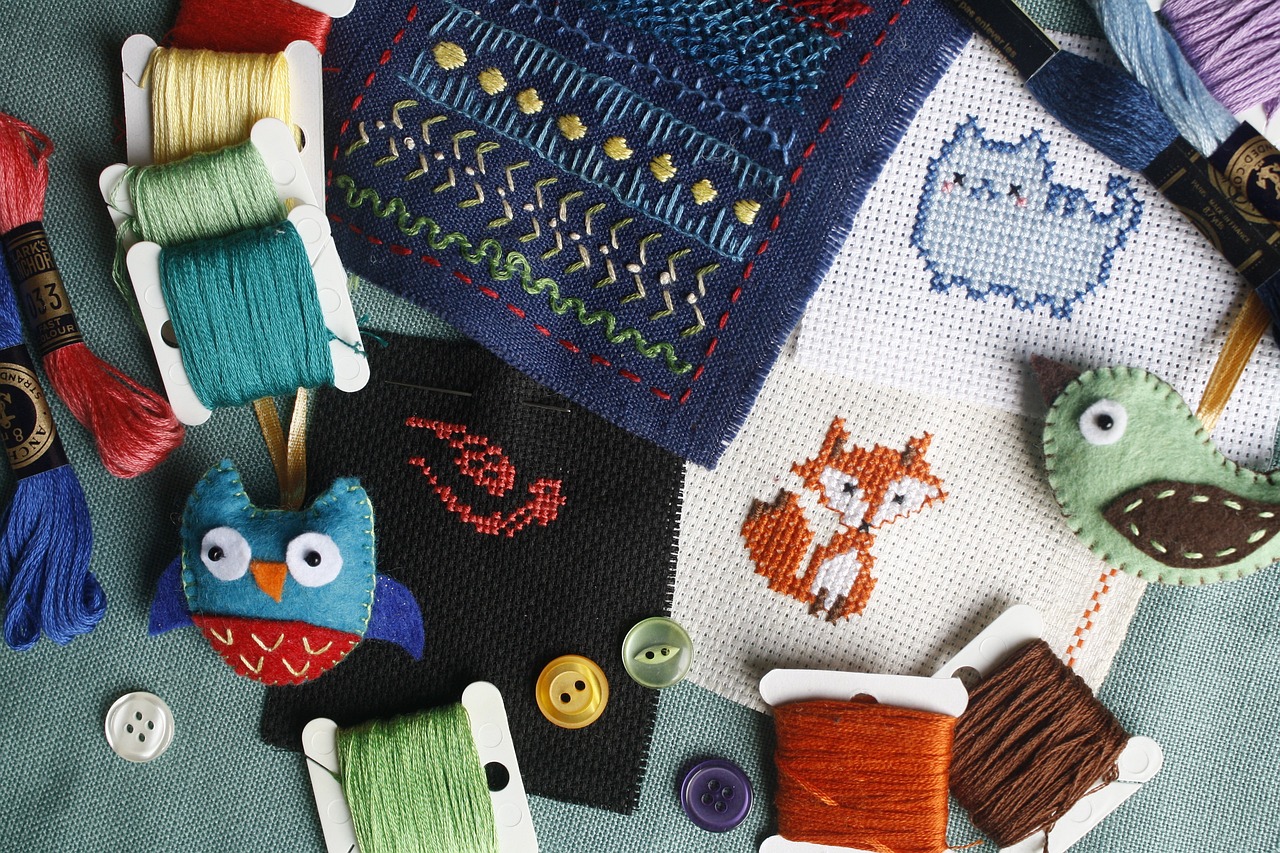
Learning Through Play
When it comes to children, the phrase "learning through play" holds a treasure trove of meaning. Eco-crafting is a fantastic way to blend fun and education, allowing kids to explore the world around them while engaging in creative activities. Imagine your child transforming a mundane cardboard box into a vibrant birdhouse or a simple collection of leaves into a stunning collage. Not only do these activities spark their imagination, but they also serve as a gateway to understanding complex environmental issues.
By participating in eco-crafts, children are not just playing; they are absorbing valuable lessons about sustainability and the importance of caring for our planet. For instance, while making a DIY bird feeder, they learn about local wildlife and the role of birds in our ecosystem. They might ask questions like, "Why do birds need our help?" or "What happens if we don't feed them?" This natural curiosity leads to deeper discussions about biodiversity and conservation, making the learning experience both meaningful and memorable.
Moreover, eco-crafting encourages teamwork and collaboration. When kids work together on a project, they learn essential social skills such as communication, sharing, and problem-solving. Picture a group of children gathering twigs and leaves for a nature collage. They’ll have to negotiate which materials to use and how to arrange them, fostering a sense of community and cooperation. This collaborative spirit is vital for their development, as it teaches them to appreciate different perspectives and ideas.
Incorporating eco-crafts into playtime can also help children develop fine motor skills. Activities like cutting, gluing, and assembling require dexterity and coordination. As they manipulate various materials, they enhance their hand-eye coordination and strengthen the muscles in their hands. This hands-on approach to learning makes it easier for children to grasp concepts that might seem abstract otherwise. It’s like turning a simple art project into a mini science experiment!
Ultimately, eco-crafting is not just about creating something beautiful; it's about instilling a sense of responsibility and connection to the environment. Children learn that their actions can have a positive impact on the world around them. They begin to understand that every piece of trash can become a treasure and that nature is a canvas waiting for their creativity. So, the next time your child asks to craft, consider diving into the world of eco-crafting. It’s a fun way to play, learn, and grow!
- What materials are best for eco-crafting? You can use a variety of recycled materials such as cardboard, plastic bottles, old newspapers, and natural elements like leaves and stones.
- How can I encourage my child to engage in eco-crafts? Start by introducing simple projects and involving them in the planning process. Make it a fun family activity!
- Are eco-crafts safe for children? Yes, as long as you supervise them during crafting, especially when using scissors or other tools.
- What are some other benefits of eco-crafting? Besides creativity, eco-crafting enhances problem-solving skills, boosts self-esteem, and promotes environmental awareness.
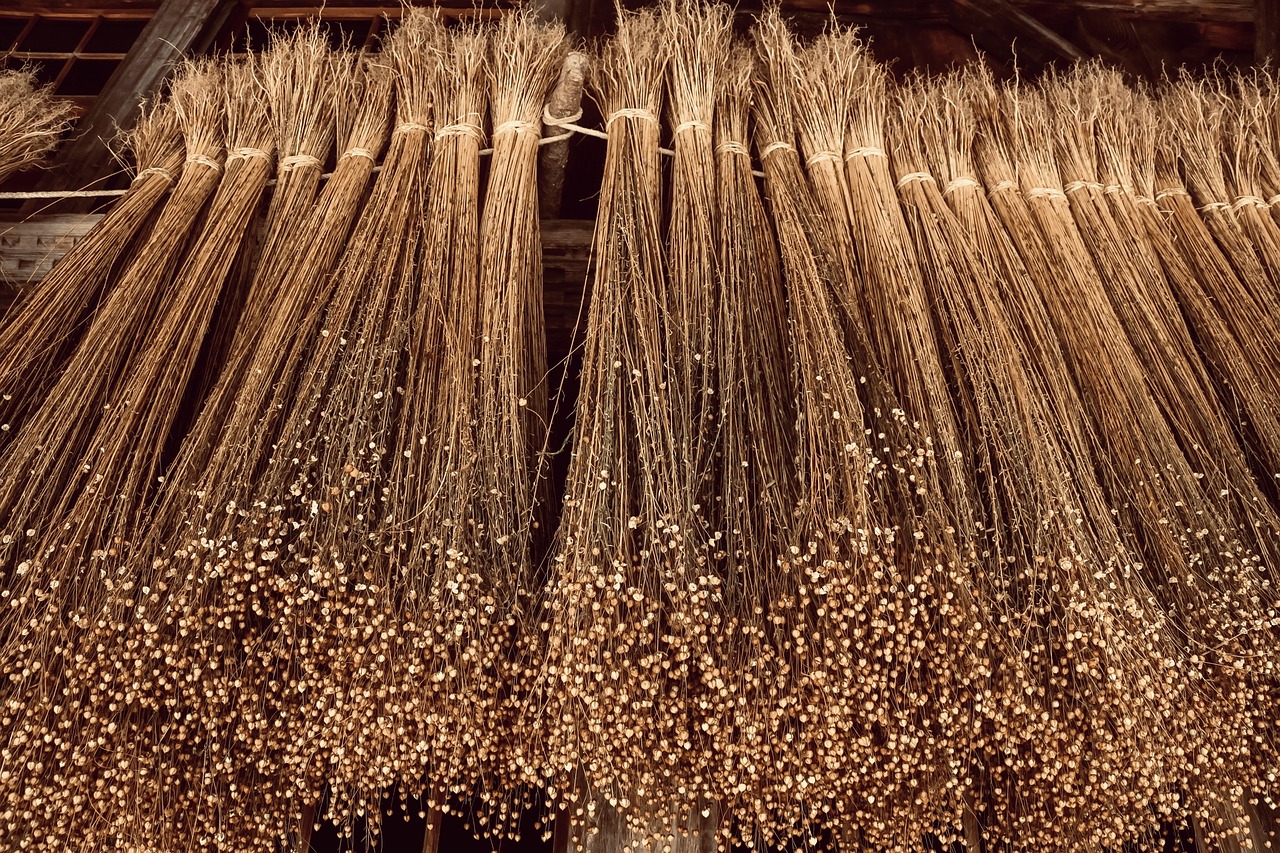
Simple Eco-Craft Ideas
When it comes to eco-crafting, the possibilities are as vast as a child's imagination! There are countless ways to engage kids in fun, sustainable projects that not only spark creativity but also teach valuable lessons about the environment. Let's dive into some simple eco-craft ideas that can be easily executed at home or in school, using materials that are often just lying around. These projects are not just about creating; they are about connecting with nature and understanding the importance of reusing and recycling.
One fantastic project to start with is making DIY Bird Feeders. This craft is not only easy but also incredibly rewarding. Children can use items like empty plastic bottles, milk cartons, or even old teacups to create feeders that attract local birds. Imagine the excitement on their faces as they spot a colorful finch or a cheeky sparrow visiting their handiwork! To make a simple bird feeder, you can follow these steps:
- Take a clean plastic bottle and make a few holes on the sides.
- Insert wooden spoons or sticks through the holes to create perches.
- Fill the bottle with birdseed and hang it outside using twine.
This project not only encourages children to observe wildlife but also teaches them about the different species of birds in their area. Plus, they get to enjoy the fruits of their labor as they watch birds flock to their feeders!
Another engaging activity is creating Nature Collages. This craft is a wonderful way for children to explore the outdoors while learning about biodiversity. All they need to do is collect various natural items like leaves, flowers, and small stones during a nature walk. Once they have their treasures, they can arrange them on a piece of cardboard or paper to create a beautiful collage. This activity allows for plenty of creativity, as kids can mix and match colors, shapes, and textures. Not only does this help in developing their artistic skills, but it also fosters a deeper appreciation for the environment.
For those who want to take it a step further, consider incorporating an educational aspect into the collage-making process. As children gather materials, encourage them to ask questions like:
- What types of leaves are we collecting?
- What colors can we find in nature?
- How do these materials contribute to the ecosystem?
This approach not only makes crafting fun but also enriches their understanding of the natural world. They learn to see the beauty in everyday materials while grasping the significance of preserving our environment.
In addition to bird feeders and collages, there are many other eco-craft ideas that can be explored, such as making seed bombs from recycled paper, creating planters from old tin cans, or even designing greeting cards using natural dyes. The key is to keep the projects simple, enjoyable, and educational. By fostering a love for crafting with recycled and natural materials, we are instilling a sense of responsibility in our children towards the planet.
As you embark on these eco-crafting adventures, remember that the journey is just as important as the end product. Encourage kids to express their thoughts and feelings about what they create, and watch as their passion for sustainability grows!
Q: What age group is suitable for eco-crafting?
A: Eco-crafting can be enjoyed by children of all ages! Younger kids may need assistance, while older kids can take on more complex projects independently.
Q: What materials can we use for eco-crafts?
A: You can use a variety of materials, including recycled items like cardboard, plastic bottles, and paper, as well as natural elements like leaves, stones, and twigs.
Q: How do eco-crafts benefit children?
A: Eco-crafts enhance creativity, improve fine motor skills, promote teamwork, and instill a sense of responsibility towards the environment.
Q: Can eco-crafting be done indoors?
A: Absolutely! Many eco-crafts can be done indoors, especially those that utilize recycled materials. Just ensure you have a clean workspace!

DIY Bird Feeders
Creating is not just a fun activity for kids; it's a fantastic way to connect them with nature and teach them about local wildlife. Imagine your child watching in awe as colorful birds flock to the feeder they made with their own hands! This project is simple, engaging, and can be done with materials you likely already have at home. Plus, it instills a sense of responsibility as they learn to care for the creatures that share our environment.
To get started, gather some common household items such as empty plastic bottles, toilet paper rolls, or even old wooden spoons. These items are perfect for repurposing into unique bird feeders. For instance, a plastic bottle can be transformed into a hanging feeder by cutting holes in the sides for birds to access the seeds. Just fill the bottle with birdseed, hang it from a tree branch, and watch the magic unfold!
Here’s a quick overview of how to create a simple bird feeder using a toilet paper roll:
- Materials Needed:
- Toilet paper roll
- Peanut butter
- Birdseed
- String or twine
- Steps:
- Spread a generous layer of peanut butter over the entire surface of the toilet paper roll.
- Roll the peanut butter-covered tube in birdseed until it’s fully coated.
- Thread a piece of string through the roll and tie it securely.
- Hang the feeder from a tree branch and enjoy watching the birds!
This simple project not only promotes creativity but also teaches children about the importance of providing food for birds, especially during harsh weather conditions. Kids will learn to identify different bird species that visit their feeders, enhancing their observational skills and fostering a deeper appreciation for nature.
Moreover, making bird feeders can also lead to discussions about the ecosystem, biodiversity, and the role of birds in our environment. It’s an opportunity for parents and educators to engage in meaningful conversations about conservation and the importance of protecting wildlife habitats. So, gather those materials, roll up your sleeves, and embark on this exciting crafting adventure!
1. What types of birds will visit my DIY bird feeder?
The types of birds that visit your feeder will depend on your location and the food you provide. Common visitors include sparrows, finches, and chickadees. Using a variety of seeds can attract a broader range of birds.
2. How can I ensure my bird feeder is safe for birds?
To keep birds safe, avoid using any materials that may be harmful, such as glue or paint. Always opt for natural ingredients like peanut butter, and ensure that the feeder is clean and free of mold.
3. When is the best time to put out bird feeders?
The best time to put out bird feeders is during the fall and winter months when natural food sources are scarce. However, you can keep feeders up year-round to support local bird populations.

Nature Collages
Creating is not just a fun activity for kids; it's a fantastic way to connect them with the beauty of the outdoors while sparking their creativity. Imagine your little ones wandering through a park or garden, collecting vibrant leaves, delicate flowers, and interesting twigs. Each item they gather tells a story, and together, they can create a masterpiece that reflects their unique perspective on nature. This hands-on experience promotes not only artistic expression but also an appreciation for the environment.
To start a nature collage, all you need are a few simple materials: some sturdy paper or cardboard as a base, glue, and the natural treasures your children collect. As they arrange their finds, they can experiment with different colors, shapes, and textures, learning about the diversity of nature in the process. This activity can be a wonderful opportunity to discuss the various plants and animals that inhabit their surroundings, fostering a deeper understanding of biodiversity.
Moreover, nature collages can serve as a great educational tool. You can incorporate lessons about the importance of preserving natural resources and protecting habitats. For instance, while crafting, you might ask questions like, “What do you think happens to these plants if we don’t take care of our environment?” This way, the activity becomes a springboard for meaningful conversations about sustainability and ecology.
Encouraging kids to create nature collages also helps them develop fine motor skills as they manipulate small objects and apply glue. It’s an engaging way to practice hand-eye coordination and dexterity while having fun. Plus, the satisfaction of completing a collage can boost their self-esteem and sense of accomplishment.
Here’s a simple process to get started with nature collages:
- Gather Materials: Take a walk outside and collect various natural items such as leaves, flowers, and small stones.
- Choose a Base: Use a piece of cardboard or thick paper as the canvas for your collage.
- Arrange and Glue: Experiment with different layouts before gluing the items down.
- Add Details: Consider adding drawings or labels to enhance the collage and provide context.
In the end, nature collages are more than just a craft; they are a wonderful way for children to explore their creativity while developing a sense of responsibility towards the environment. So, grab your glue and get ready to embark on a colorful adventure through the great outdoors!
Q1: What age group is suitable for nature collages?
A1: Nature collages can be enjoyed by children of all ages, though younger kids may need more guidance and assistance with glue and handling small items.
Q2: Can we use any natural materials for collages?
A2: Yes, you can use a variety of natural materials, but it's important to avoid taking items from protected areas or harming plants and wildlife.
Q3: How can we preserve the nature collages once completed?
A3: You can preserve nature collages by using a spray sealant or by framing them under glass to protect them from dust and damage.
Q4: Are there any alternatives to glue for sticking natural items?
A4: Yes, you can use double-sided tape or even natural adhesives like flour and water paste if you prefer a more eco-friendly option.

Getting Started with Eco-Crafts
Jumping into the world of eco-crafts can be one of the most rewarding experiences for both kids and parents. Not only does it spark creativity, but it also nurtures a sense of responsibility towards our planet. So, how do you get started? First things first, gather your materials! Look around your home; you’ll be amazed at how many items you can repurpose. Think about old newspapers, cardboard boxes, and even those pesky plastic containers that seem to multiply in your kitchen. The beauty of eco-crafting lies in its simplicity and accessibility. You don’t need to spend a fortune on supplies; nature and your recycling bin are your best friends!
Once you have your materials, create a dedicated crafting space. This could be a table in your living room or a corner of the garden. The key is to make it inviting and organized. Set up some containers for different materials—one for paper, another for plastics, and a separate one for natural items like leaves and twigs. This not only keeps things tidy but also teaches kids the importance of sorting and organization, which is a valuable skill in itself.
Next, consider the type of projects you want to undertake. You might want to start with simple crafts that require minimal supervision, allowing children to explore their creativity independently. For example, making DIY bird feeders or creating nature collages can be engaging and educational. These projects not only utilize recycled materials but also connect kids with nature, enhancing their understanding of the environment. Encourage them to think about what they want to create and let their imaginations run wild!
Incorporating educational elements into your crafting sessions can make the experience even more enriching. For instance, while working on a project, discuss the importance of recycling and how it helps reduce waste. Explain how certain materials can harm wildlife if not disposed of properly. This dialogue can deepen their understanding of environmental issues and inspire them to be proactive in their efforts to protect the planet.
Lastly, don't forget to celebrate the finished projects! Displaying their crafts around the house or sharing them with friends and family can boost their confidence and reinforce the idea that their efforts matter. Remember, the journey of eco-crafting is just as important as the end result. It's about learning, exploring, and having fun while making a positive impact on our world.
- What age is appropriate for eco-crafting? Eco-crafting can be adapted for all ages! Younger children may need more guidance, while older kids can take the lead on their projects.
- What materials are best for eco-crafts? Look for items that are easily accessible, such as cardboard, paper, plastic bottles, and natural elements like leaves and stones.
- How can I encourage my child to be creative? Allow them to experiment with different materials and ideas without strict guidelines. The goal is to let their imagination flourish!
Frequently Asked Questions
- What are eco-crafts?
Eco-crafts are creative projects that utilize natural or recycled materials to promote sustainability and environmental awareness. They encourage children to think creatively while learning about the importance of reusing and recycling resources.
- Why are eco-crafts beneficial for kids?
Eco-crafts offer numerous benefits, including enhancing fine motor skills, fostering teamwork, and instilling a sense of responsibility towards the environment. They also provide a fun way for kids to express their creativity and learn about ecological issues.
- What materials can be used for eco-crafting?
Kids can use a variety of materials, such as cardboard boxes, plastic bottles, old newspapers, and natural elements like leaves, stones, and twigs. The goal is to repurpose items that would otherwise go to waste, making crafting both fun and sustainable.
- Can eco-crafts be done indoors?
Absolutely! While many eco-crafts can be done outdoors, there are plenty of projects that can be completed indoors using materials found around the house. Just make sure to have a designated crafting area to keep things tidy!
- How can parents encourage eco-crafting at home?
Parents can start by providing a selection of recyclable materials and suggesting simple projects. They can also participate in crafting activities with their kids, making it a fun family bonding experience while teaching valuable lessons about sustainability.
- Are there any safety concerns with eco-crafting?
While eco-crafting is generally safe, it's important to supervise children, especially when using scissors, glue, or other crafting tools. Always choose age-appropriate projects and materials to ensure a safe crafting experience.
- What are some simple eco-craft ideas for beginners?
Some easy eco-craft ideas include DIY bird feeders made from plastic bottles, nature collages using leaves and flowers, and recycled paper crafts. These projects are not only simple but also encourage kids to explore their creativity and the environment.
- How do eco-crafts help teach kids about the environment?
Eco-crafts provide a hands-on approach to learning about environmental issues. By engaging in crafting activities, children can see the impact of recycling and repurposing materials, helping them understand the importance of taking care of our planet.



















